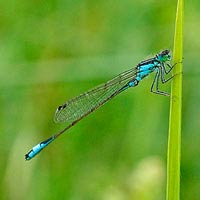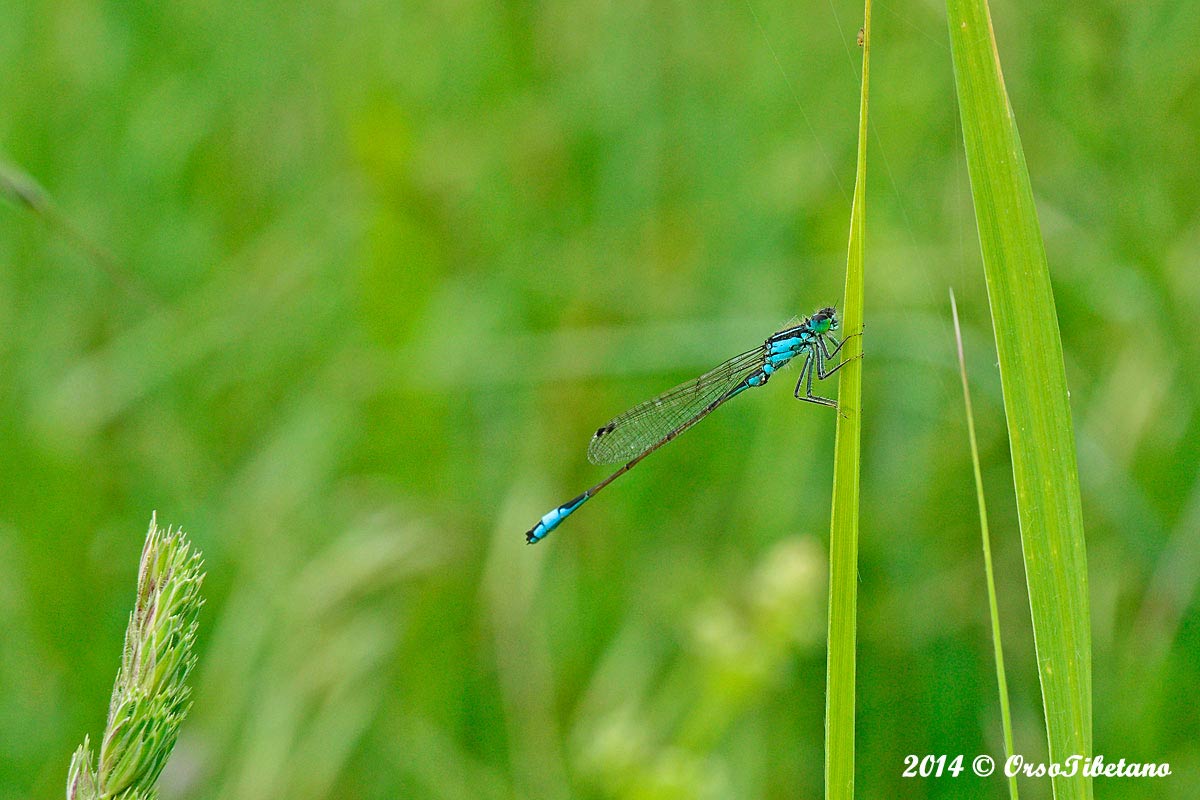
Maggio 2014 / May 2014
 |
Maggio 2014 / May 2014 |
 |
|
Damigella
(Ischnura elegans) Damsel Dragonfly Tutti gli insetti comunemente chiamati libellule appartengono all'ordine degli "odonati" che dal greco significa "mandibole dentate". Esistono due gruppi principali: gli Anisotteri, o vere libellule, e gli Zigotteri o "damigelle". Si distinguono da posate perché le vere libellule tengono le ali aperte e orizzontali mentre le damigelle le tengono verticali e chiuse sopra il corpo. Hanno entrambi un corpo allungato, occhi molto grandi, antenne corte e due paia di ali trasparenti, tutte si nutrono di insetti che catturano in aria. Sono legati biologicamente all'ambiente acquatico nelle cui vicinanze trascorrono la loro esistenza, le forme giovanili (ninfe) vivono infatti nell'acqua e sono ottimi predatori cacciando prevalentemente insetti e girini. Quando le larve sono mature (il loro sviluppo può durare anche 5 anni) avviene la metamorfosi: la ninfa si arrampica fuori dall'acqua dove, in pochi giorni, svilupperà un insetto adulto. Le libellule possono battere le ali anche 20 volte al secondo, sono in grado di arrestarsi istantaneamente, librarsi immobili e volare all'indietro per brevi tratti. Fonte : WWW.LucianaBartolini.Net All insects commonly called dragonflies belong to the order of "odonates" that from the greek means "toothed mandibles." There are two main groups: the Anisotteri, or true dragonflies, and Zigotteri or "damsels". They are distinguished flatware because the true dragonflies hold their wings open and horizontal while the damsels they hold them vertical and shut over the body. Both have an elongated body, very large eyes, short antennae and two pairs of transparent wings, all feed on insects that capture in the air. Are biologically related to the aquatic environment near which spend their existence, the juvenile forms (nymphs) indeed are living in the water and are excellent predators hunting mainly insects and tadpoles. When the larvae are mature (their growth can take up to 5 years) takes the metamorphosis: the nymph climbs up outside the water where, in just a few days, will develop an adult insect. Dragonflies can beat their wings much as 20 times per second, are able to instantly stop, hover and fly backwards motionless for a short distance. Source: WWW.LucianaBartolini.Net |
| Aprile April |
Home pagine del mese Home page of the month |
Home Site | Le
mie Fotografie My Photographs |
Giugno June |